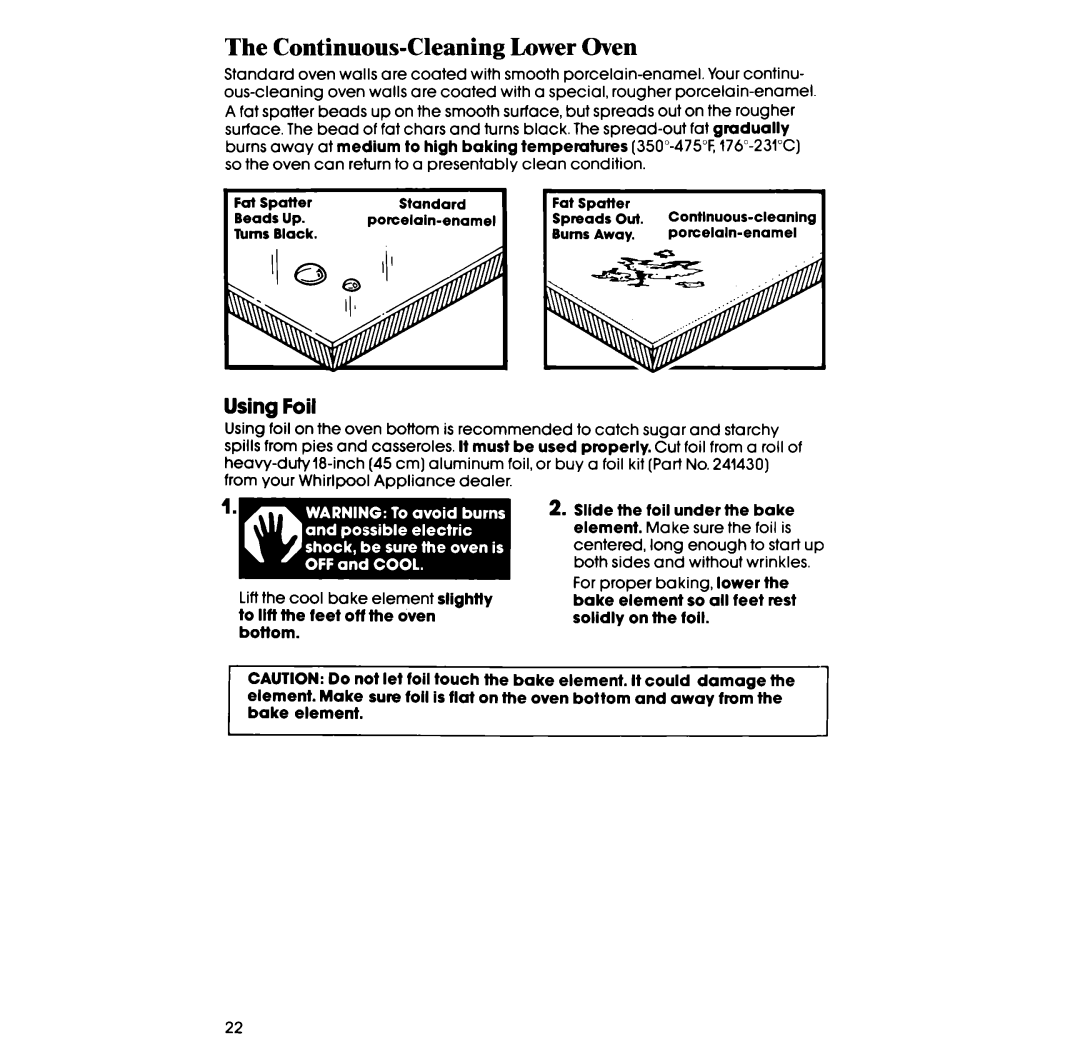
The Continuous-Cleaning Lower Oven
Standard | oven walls | are coated with | smooth | Your continu- |
| ||||||
oven | walls | are | coated | with a special, rougher |
| ||||||
A fat spatter beads up on the smooth surface, but spreads out on the rougher |
| ||||||||||
surface. | The | bead | of fat | chars | and | turns black. | The | fat gradually |
| ||
burns away at medium to high baking temperatures |
| ||||||||||
so the oven | can | return to a presentably | clean | condition. |
|
| |||||
Turns B&k. |
|
|
|
|
|
|
| 2out. |
|
| |
|
|
|
|
|
| 1B~G~iway. |
| I | |||
I | - |
|
|
|
|
|
|
|
|
| |
Using Foil
Using foil on the oven bottom is recommended to catch sugar and starchy spills from pies and casseroles. It must be used properly. Cut foil from a roll of
1. | 2. Slide the | toil under | the | bake |
| element. | Make sure | the | foil is |
centered, long enough to start up both sides and without wrinkles.
Lift the cool bake element slightly to Iftl the feet off the oven bottom.
For proper baking, lower the bake element so all feet rest solidly on the foil.
CAUTION: Do not let foil touch the bake element. It could damage the element. Make sure toll is flat on the oven bottom and away from the bake element.
22
